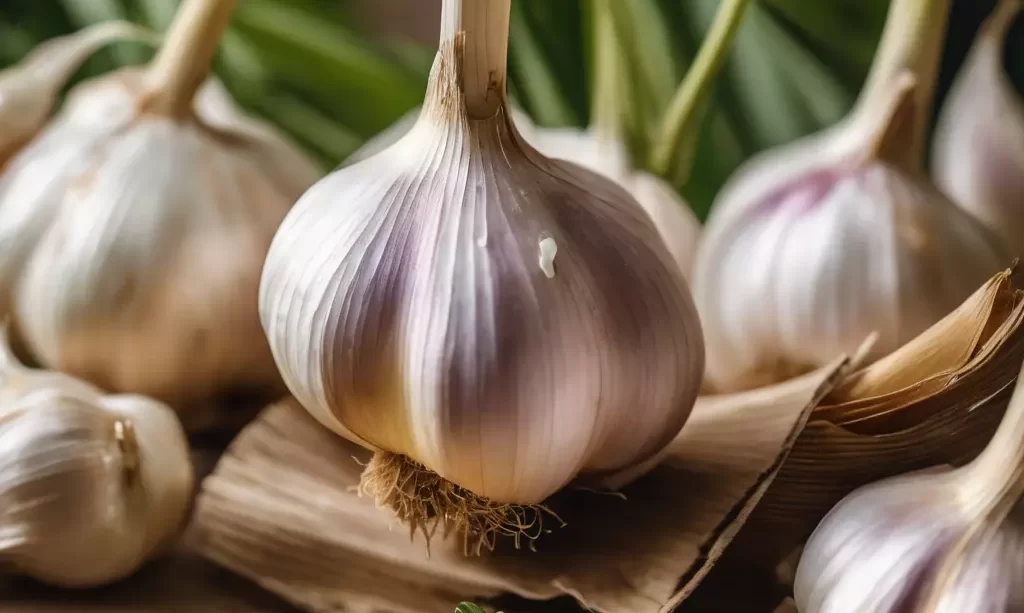Garlic is a popular and versatile crop that can thrive in Texas, given the state’s diverse climate zones. From the drier, warmer regions of West Texas to the more humid East, garlic can be successfully grown with the right know-how. This article provides detailed guidance on growing garlic in Texas, covering everything from selecting suitable varieties to harvesting. Understanding the unique climate challenges and soil conditions in Texas is crucial for cultivating garlic that is flavorful and abundant.
- Softneck, artichoke-type.
- Bulbs have spicy-hot flavor and papery skins.
- Approx. 10-20 cloves per bulb.
- Easy to grow and very productive.
- Adaptable to a range of climates.
Choosing the Right Garlic Variety
In Texas, both softneck and hardneck garlic varieties can be grown, but the choice depends largely on the specific climate zone. Softneck varieties, like ‘Silverskin’ and ‘Artichoke’, generally perform better in milder, southern parts of Texas due to their heat tolerance. Hardneck varieties, such as ‘Rocambole’ and ‘Porcelain’, are more suited to the cooler, northern regions of the state. It’s important to choose a variety that matches your local climate conditions for optimal growth. Additionally, sourcing garlic bulbs from reputable local nurseries or garden centers can ensure they are acclimated to Texas conditions.
Soil Preparation
Garlic prefers well-draining soil with plenty of organic matter, which is essential for healthy growth and bulb development. In Texas, soils can vary greatly, from heavy clay to sandy loams. It’s important to amend the soil with compost or well-rotted manure to improve its structure and fertility. The ideal pH for growing garlic is between 6.0 and 7.0, so testing the soil and adjusting its pH with lime (for acidic soils) or sulfur (for alkaline soils) may be necessary. Preparing the soil with adequate nutrients and proper drainage will set the foundation for a successful garlic crop in Texas.
Planting Time and Techniques
In Texas, the ideal time to plant garlic is typically in the fall, from late September to November, allowing the bulbs to establish roots before the cold winter months. This timing also takes advantage of the cooler spring for bulb development. To plant:
- Separate the cloves: Break the garlic bulbs into individual cloves, keeping the papery husk intact.
- Planting depth and spacing: Plant cloves about 2 inches deep and 4-6 inches apart, with the pointed end facing upward. Rows should be spaced about 12-18 inches apart.
- Location: Choose a sunny spot in the garden, as garlic requires plenty of sunlight for optimal growth.
Watering and Mulching
Proper watering is crucial, especially in Texas’s variable climate:
- Watering schedule: Garlic needs consistent moisture. Water deeply once a week, adjusting based on rainfall and temperature. Avoid overwatering, as garlic does not tolerate soggy soil.
- Mulching: Apply a layer of organic mulch, like straw or grass clippings, after planting. Mulch helps retain soil moisture, regulate temperature, and suppress weeds.
Fertilization
Garlic benefits from timely fertilization, especially in Texas’s diverse soil types:
- Initial Fertilization: Incorporate a balanced fertilizer or well-rotted manure into the soil before planting.
- Growth Stage Fertilization: Apply a nitrogen-rich fertilizer in early spring as the leaves begin to grow, and again about a month later to support vigorous growth.
- Reduce Nitrogen Later: Stop nitrogen applications once the garlic plants begin to form bulbs (usually by late spring), as excess nitrogen late in the season can affect bulb development.
- Natural product
- Repels pests
- One applications lasts 3-4 weeks
- Won’t harm pets or children in yard
- No harmful fumes or chemicals
Managing Pests and Diseases
In Texas, garlic may face various pests and diseases:
- Common Pests: Watch for onion thrips, nematodes, and aphids. Regularly inspect plants and use organic pesticides or natural predators as control methods.
- Disease Prevention: To prevent fungal diseases like white rot and rust, ensure good air circulation and practice crop rotation. Avoid overhead watering to keep foliage dry.
- Soil Health: Maintain healthy soil with organic matter to naturally reduce disease risks.
Harvesting and Curing
Timing is crucial for harvesting garlic in Texas:
- Harvest Time: Typically, garlic is ready to harvest in late spring or early summer in Texas, when the lower leaves start to brown but several green leaves remain.
- Harvesting Technique: Gently dig around the bulbs and lift them out of the soil. Avoid pulling the stems, as this can damage the bulbs.
- Curing Process: Cure garlic in a dry, well-ventilated area for about two weeks. Hang the bulbs or lay them out on a flat surface, ensuring they are not touching. Once cured, trim the roots and stems.
Seasonal Considerations
Texas’s varied climate means gardeners must adapt to seasonal changes:
- Winter Protection: In northern Texas, mulch heavily to protect garlic from freezing temperatures.
- Summer Heat: In southern regions, be vigilant about watering and mulching to protect garlic from extreme heat and to maintain soil moisture.
Troubleshooting Common Problems
Common issues when growing garlic in Texas include:
- Poor Bulb Development: Often due to planting too shallow or insufficient chilling in warmer regions.
- Yellowing Leaves: Can indicate overwatering, poor drainage, or a nutrient deficiency.
- Bolting: Occurs when garlic plants produce a flower stalk. This is more common in hardneck varieties and can be reduced by appropriate variety selection and proper planting time.
Conclusion
Growing garlic in Texas can be highly rewarding with the right techniques and knowledge. By understanding the specific needs of garlic, adapting to the local climate, and staying vigilant against pests and diseases, gardeners can enjoy a successful harvest. Remember, each gardening experience offers valuable lessons, so don’t hesitate to experiment with different varieties and methods to find what works best in your Texas garden.





